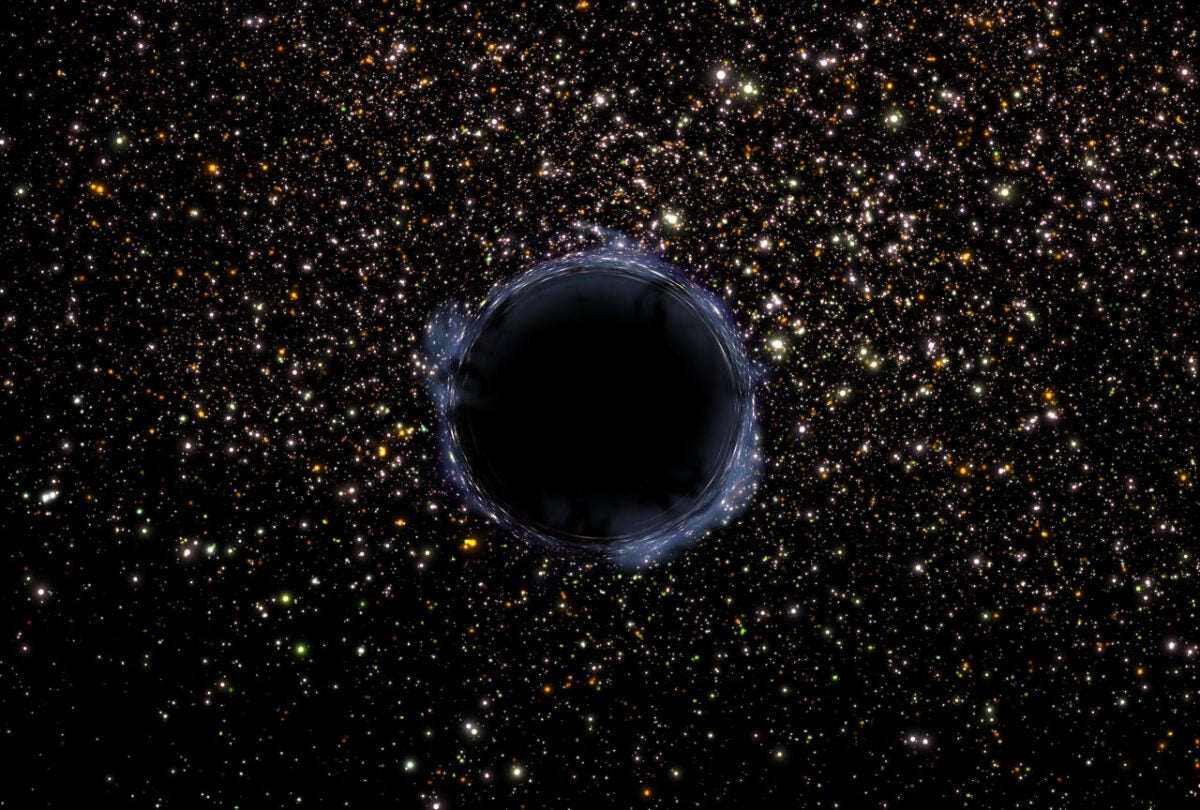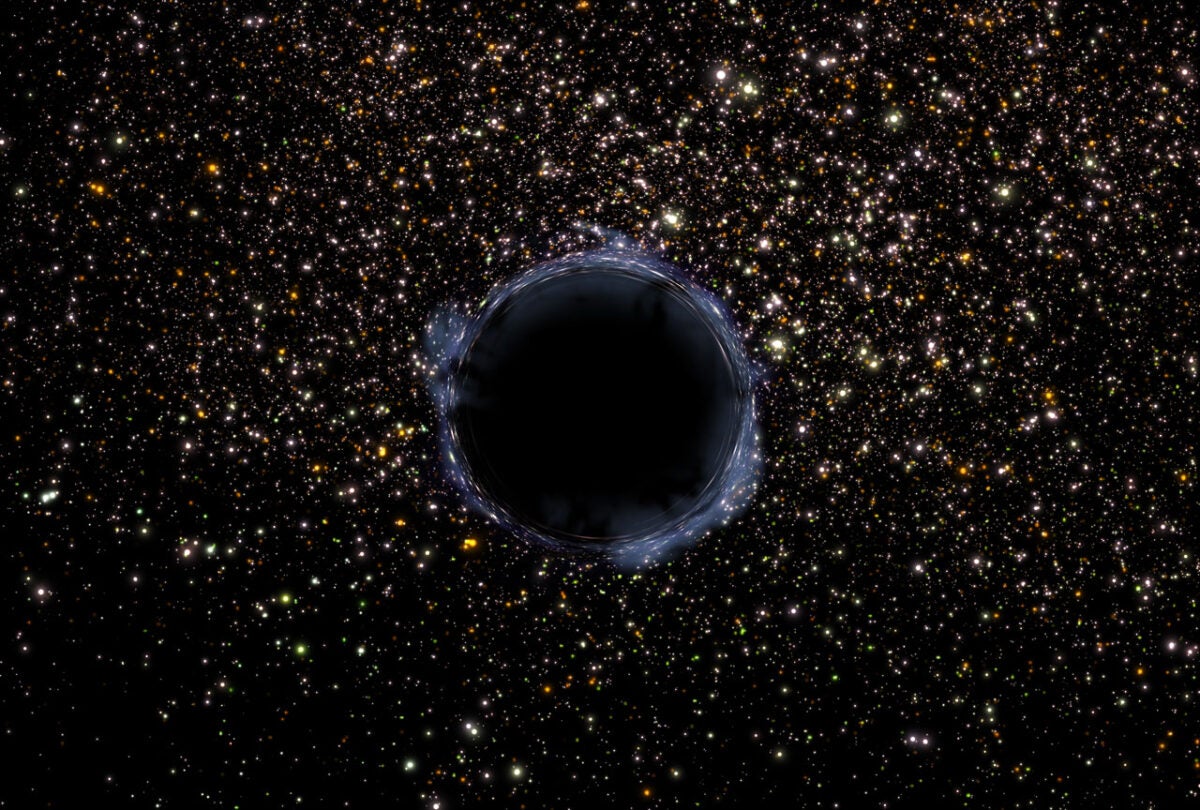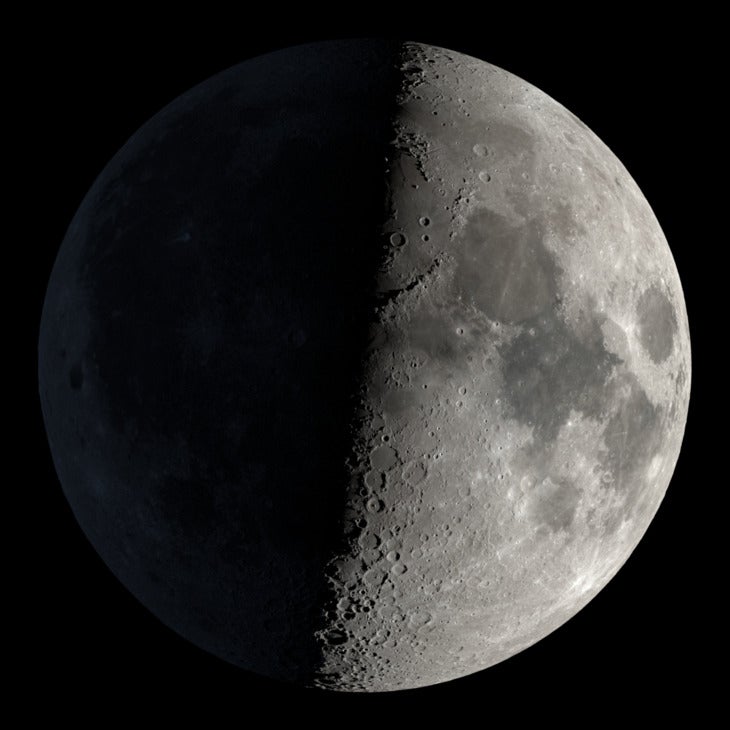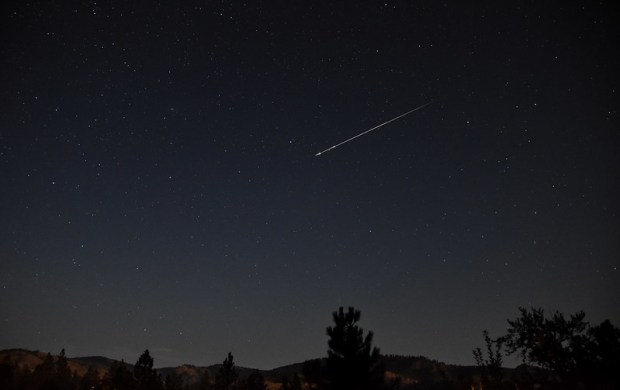
Credit: NASA/ESA and G. Bacon (STScI)
Black holes are the universe’s shadowy figures, with many millions of them roaming unseen in our galaxy alone. These cosmic heavyweights famously destroy anything that wanders too close, tearing stars and other objects to shreds with their immense gravitational pull.
But that may not be the end of the story for those doomed objects. A new study published Oct. 28 in the Journal of Cosmology and Astroparticle Physics provides observational evidence that some of the matter that falls into black holes could be converted into dark energy, the mysterious pressure that’s speeding up the universe’s expansion and makes up 70% of the cosmos.
Related: What we do — and don’t — know about dark energy
This result hinges on a strange possible property of black holes that form when a massive star runs out of fuel and collapses. Called “cosmological coupling,” this theory states that black holes are woven into the fabric of the cosmos in such a way that makes them grow in step with the universe’s expansion — a feature notably absent from the standard definition of black holes, which says they can only gain mass by merging together or gobbling up other objects.
Cosmological coupling
It’s a bizarre concept that dates all the way back to 1915. That year, Albert Einstein introduced general relativity — a set of cosmic equations with some mind-bending implications for the universe’s behavior.
The equations gave rise to wild new phenomena like black holes and the expansion of the universe, both of which are well observed. But since the equations rely on some factors that aren’t fully known (because we haven’t precisely pinned down all the properties of the universe), they can have different possible solutions depending on what those undefined values might be.
That’s how we could get cosmological coupling — there are certain conditions that could allow black holes to “couple” with cosmic expansion.
If black holes do indeed interact with the evolving space-time around them in this way, gaining mass and energy proportionally as the universe expands, dark energy could arise entirely from the process.
Dark energy’s distribution
That goes against standard thinking, which suggests that dark energy is uniformly distributed throughout the cosmos.
“I would say that’s misconception number one,” says Kevin Croker, an assistant research scientist at Arizona State University who led the recent study. “There’s a very clear, though controversial, argument that it doesn’t matter where the dark energy is; it just matters that you have dark energy somewhere. So it could be uniformly smeared out, or it could be sitting around in many tiny blobs,” which would be the case if it were produced by black holes strewn across space and time.
To put the idea to the test, a team of scientists analyzed tens of millions of far-flung galaxies measured by the Dark Energy Spectroscopic Instrument (DESI) installed at Kitt Peak National Observatory near Tucson, Arizona.
By measuring how fast the galaxies are receding at different distances, which correlate to different cosmic ages, scientists determined how the universe’s expansion rate has changed over time under the influence of dark energy. Then the team cross-checked that data with information about the rate at which black holes formed across the same huge swath of time.
If their theory about black holes producing dark energy is correct, black hole formation and dark energy’s density should be correlated; as more black holes form, dark energy should increase in strength.
That’s exactly what they saw.
Far from proven
But not everyone is convinced.
Prevailing dark energy theories predict a so-called cosmological constant, in which the mysterious cosmic pressure has a constant strength, neither growing nor weakening over time, and is uniformly spread throughout the cosmos. Dark energy expert Yun Wang, a senior research scientist at Caltech IPAC, cautions that the measurements aren’t constrained well enough to strongly support that dark energy evolves over time. And cosmologically coupled black holes may not even exist. “This is speculative at present,” she says. “Thus this theory is possible, but not yet plausible.”
Additional studies could help tip the balance.
“The next question is to ask where the black holes are, adding their positions into the calculation,” Croker says. “There are all sorts of interesting surprises that can happen there, and we’re exploring that right now.”
Confirming the theory would redefine our understanding of the universe’s expansion and unlock many new questions. But even if future observations disprove the theory, the pursuit will still push the boundaries of current scientific knowledge and open doors to new discoveries.
“This will only bring more depth and clarity to our understanding of dark energy, whether that continues to support the black hole hypothesis or not,” said Steve Ahlen, a professor emeritus of physics at Boston University and co-author of the paper, in a press release. “I think as an experimental endeavor, it’s wonderful. You can have preconceived notions or not, but we’re driven by data and observations.”



